Analysis of data from the pesticide market in Argentina
Recently CASAFE (the Argentine Chamber of Agrochemicals) issued a report on the evolution of its market: the use of pesticides increased 858% in the last 22 years, the cultivated areas increased 50%, but the crop yield only increased 30%. In Argentina, there is a great business for the global poison industry (led by Monsanto and Bayer), and public health is faced with a great problem.
to view the article in pdf click here: [download id=»93″]
During the last crop season (2012-2013), agrochemical sales in dollars increased 16%. As in previous years, Argentina increased its expenditure on this area achieving a turnover of 2,381 million dollars during the last period. 317 million kg/l of pesticides was the amount sprayed in the fields(1).
The strength of this business would not be of any concern for us if this enormous amount of poison was not sprayed over areas of intense monoculture, where more than 12 million people live. These very same citizens are exposed every year, during the same months, to the same poisons, but with an increasing dose every year, and gradually those poisons are mixed with even more dangerous ones.
Why we call them “toxic agrochemicals”
These chemicals are used to exterminate «pests» and «plagues» from crops (pesticides), all of which are caused by living biological organisms. Herbicides, insecticides, acaricides, fungicides are all poisons intended to kill living beings. They clearly are toxic products used in agriculture (hence toxic agrochemicals), with different levels of toxicity, some more lethal and others less aggressive, but all of them are poisons that affect human health, even those we considered to be harmless (remember the history of DDT?).
There is a deliberate commercial intent to hide the dangerousness of these products. Imposing the belief that they are not harmful or that they are «low toxicity» predisposes towards its daily and widespread use. Unfortunately, this intent can also be verified in academic settings and, to that end, they are called «defensive products» when there is nothing more «aggressive» towards nature and its biodiversity, or they can also be called «plant protection products» as if they were intended for plant or rural health when, by their effects, they are clearly biocides, which is far from being something healthy.
Things must be called by their names, and poisons for agricultural purposes must be generically called toxic agrochemicals. Let’s remember that Monsanto, and even the Minister of Science and Technology of Argentina himself, Dr. Lino Barañao, claim that it is safe to drink a full glass of Glyphosate (Roundup), although it has been scientifically proven that everyone who did it died(2).
Evolution of toxic agrochemicals use
Last year, when the expenditure in dollars on toxic agrochemicals increased again, the Chambers from the agricultural sector declared that there was a slight decrease in the volume used (5%) as a result of the sell of preparations with a higher concentration of active ingredients, mainly to replace the usual glyphosate dilution, since higher doses (concentration in 66% and 74%) were required because the usual concentration was no longer effective. Glyphosate is the most commonly used toxic agrochemical in Argentina, comprising 64% of total sales, and 200 million kg/l of glyphosate were applied during the last crop season.
In 2012 the total volume of all pesticides had reached 335 million kg/l and is continuously increasing, as can be seen in Figure No. 1 based on data from CASAFE, produced by REDUAS. Some years, for climate issues mostly, the volume sprayed was reduced slightly but the extended series shows a consistently upward curve in toxic agrochemicals use.
The premise establishing that transgenic seeds use fewer toxic agrochemicals cannot be verified in Argentinean reality. Even when we analyze that in 1996/7, a period in which transgenic soybean began to be sown, the recommended glyphosate measure was 3 l per ha per year, and currently the applied amount of glyphosate adds up to 12 l for the same area per year; this shows the inability of the toxic agricultural model to face the adaptation responses of Nature, such as the emergence of resistance in plants. The only immediate answer is increasing the poison doses used per ha (selling more pesticides to farmers), both herbicides and insecticides, and adding more dangerous toxic agrochemicals to the mixtures used to fumigate.
This same phenomenon can be seen in Brazil. In this country, it is estimated that the amount of agronomists employed by or representatives of the agrochemical industry(5) ascends to 3000, and they support the prosperity of the rural chemical business. The number of agronomists in our country may be even higher.
Another myth related to the biotech industry is that it increases crops yields. However, the number of independent scientific studies proving this a lie is growing more and more (6, 7, 8). An increase in grain production is admitted, but these researches show that the increase in yields per hectare (ha) is related to the application of traditional agricultural techniques incorporated during the last 20 years, such as the growth in density of plants per surface unit (less separation between plants in the furrow and between furrows, etc.). In Argentina the average yield in 1994 was 2,2 T per ha and 3 T in 2010; that is an average increase of 30% in crop yields… yet during this period we used 858% more poisons for agricultural purposes; clearly something is not right.

Evolution of the use of toxic agrochemicals in millions of kg/l, of cultivated areas in ha, and national average yields for crops in T/ha
Comparing the use of toxic agrochemicals in millions of kg/l per year, with the increase of cultivated areas in millions of hectares and the increase of yields in tons per ha, we find that the 858% increase in the toxic agrochemicals market does not correlate with the 50% increase in cultivated areas, nor with the 30% increase in crop yields per hectare.
When it comes to insecticides, the use of known toxic products like Chlorpyrifos (the most widely used, with a 61 million dollars expenditure in 2012), also accompanies this process of progressive and systematic increase over 2 decades.
The distribution of use per crop also shows how transgenic crops demand a higher amount of toxic agrochemicals. Corn and soybean required the use of 258 million kg/l of plaguicides during the past year (including its chemical fallows).
It is also true that the application of these chemicals was extended to all farming practices and even to home gardening. However, in analyzing the distribution of toxic agrochemical use per crop, quantities are minimal compared to the ones used by transgenic cultivation.
For example, the production of vegetables explains less than 2% of the national use of toxic agrochemicals. Although this increase is alarming from a collective health perspective, it is still scarce compared to the amount used by transgenic crops (40 million dollars spent in pesticides for vegetables versus 1800 million dollars for transgenic soybean and corn).
Toxic agrochemicals per inhabitant
315 million kg/l of poisons poured in the country represent a dose of 8 kg/l per inhabitant. However, in rural areas these numbers are much higher.
In the report(9) produced by Agronomist Aldo Viscovich from Sociedad Rural (Rural Society) of Chovet (Santa Fe, Dept. of Gral. Lopez), in the far south of Santa Fe, 6,000,000 liters of agrochemicals were applied in 621,000 ha during the 2009/10 season; thus, the count ascended to 31.5 liter per each one of the inhabitants in the region during that year.
These macro-doses of exposure explain, to a large extent, the severe impact on collective health detected on the region according to the epidemiological studies carried out by the Faculty of Medical Sciences of the Universidad Nacional de Rosario (National University of Rosario).
For example, in Murphy, located in Gral. Lopez, the mortality rate of people due to cancer is increasing, and in 2011 it was 50% higher than the national average(10). This fact can be seen along the entire soybean growing area.
In the city of Hernando, province of Cordoba, the Secretary of Municipal Health found out in an Analysis of Incidence of Cancer Disease, a research conducted under the Strategic Health Plan of the municipality and which involved the examination of records from the Municipal Hospital and the local private clinic, that in the three-year period from 2001 to 2003, 67 patients were admitted with cancer, while during the 2010-2012 period this record increased to 173 patients (a 258% increase within 10 years). The link with the high and progressive exposure to toxic agrochemicals with a recognized cancer potential(11) is very strong.
Good Agricultural Practices
Good agricultural practices (GAPs) are a series of recommendations developed by UN FAO to somehow control the environmental and health damage generated by the agricultural production that only aims at yielding income, not taking into account the need to safeguard the ecological balance of the land or nature’s ability to regenerate itself. In the chapter on the use of toxic agrochemicals, the National Institute of Agricultural Technology, INTA(2) makes recommendations with very general proposals, such as informing the population that they are going to be sprayed within 48 hours or that toxic agrochemicals must be applied according to the instructions on the label (Monsanto’s label?).
Meanwhile in Argentina, the agricultural model based on the massive use of poisons and bioengineered seeds was established during the ’90s, under the premise that the State should not control nor regulate the market, which would regulate itself under its own laws. Today, these “laws” are fully complied with (since 1996, this market is still under the limited control of the National Service of Agrifood Health and Quality [SENASA], a state institution absolutely complicit in the agribusiness), and the market, totally controlled by major biotech and agrochemical companies, was led to use, for example, 858% more pesticides than 20 years ago, a real case of agricultural malpractice.
The physicians working in crop-sprayed towns do not accept those «good agricultural practices» through which the population from crop-sprayed towns are systematically exposed to increasing doses of pesticides year after year. With the highest level of sprayings carried out by the toxic agricultural model in Argentina, we believe that these GAPs are totally inadequate, especially when we collect glyphosate in rainwater on soybean farming towns in Argentina, showing the uncontrollable level of pesticide drift and the ever-increasing impact on rural collective health.
Toxic agrochemicals in the North of Argentina
In northern areas of Argentina, where limited liability companies and agricultural conglomerates are trespassing the lands of peasants and native peoples, data are very scarce and informality is the norm accompanying the abuse of power in the region.
Over 1 million ha are occupied by these predatory companies in Santiago del Estero, 250,000 ha in Tucuman, over 1 million in Salta and 1 million ha in Chaco, growing transgenic soybean and cotton, reflecting the environmental degradation in a region where the level of contamination with toxic agrochemicals is estimated to be much higher than in the rest of the country.
In those areas, weather conditions during spring-summer (farming time) make it impossible to comply with the GAPs; temperature is never below 25º C and humidity and wind levels cause absolutely all sprayings to fail to meet FAO’s international standards and, therefore, should not be authorized by agronomists. If there were judges willing to defend the rights of native communities, systematic sprayings would not be allowed in the region.
The North of Argentina is sprayed under these conditions. As they recognize that the atmosphere will absorb almost all of the chemical applied, those businessmen apply huge doses to achieve their goals (in glyphosate that would amount to 20 to 25 kg/l per ha per year). At the same time, the toxic conditions of the environment, reflected in the high mortality rate suffered by herds, or the diseases affecting the families, encourage the native inhabitants to leave their territories.
Toxic agrochemicals worldwide
In Brazil a similar phenomenon occurs, with a deregulated market (or with lax regulations which only take into account the production and not the environment and the health of the population) that is progressively increasing the areas cultivated with transgenic seeds, but suffers from an excessive rise in the use of toxic agrochemicals, which leads to reaching the first place as the world’s highest consumer of pesticides. Brazil had an average usage of 12 kg/l per ha during the year 2011, and had a demand of 850 million kg/l per year for a surface of 70 million ha for every crop, GM soybean and corn taking up 35 million ha(5).
In the United States, the 2nd largest consumer (the 3rd one is Argentina), the average consumption is lower, reflecting greater controls from the inspection authorities but tending to a constant increase, which is inevitable within the system of toxic agriculture.
Increased consumption of toxic agrochemicals is a global phenomenon; within it, Brazil and Argentina are the most emblematic cases.
However, increased contamination caused by pesticides is not an unavoidable destiny. There are countries (the Netherlands, Sweden, Denmark, Belgium) that employ active policies to reduce their national consumption of poisons for agricultural purposes with specific goals. To do that, the first thing they did was to label those products as «toxic» and to advise against their usage; afterwards, they developed a series of mechanisms to achieve it, such as withholdings and facilitating the access to credits and marketing to those certified to use «less» or no toxic agrochemicals in their production.
In our countries, the political influence of poison companies such as Monsanto, Bayer, Dupont, etc. enables the expansion of the agribusiness, pushing forward against the rights to the environment and to health of millions of citizens, moving peasants off their lands, clearing forests, concentrating the production and producing very low quality foods with increasing amounts of toxic agrochemical residues.-
References:
1. Mercado Argentino de Productos Fitosanitarios (Argentine Market of Plant Protection Products) / Year 2011 vs 2012 CASAFE. http://www.casafe.org/biblioteca/estadisticas/
2. El Glifosato no es agua con sal (Glyphosate is not salt water). http://reduas.com.ar/el-glifosato-no-es-agua-con-sal/
3. Miguel Alberto Sánchez. Declinación del modelo sojero en la próxima década (Decline of the soybean-growing model during the next decade). Fundación Ecosur BsAs 2007
4. Agr. Gustavo Oliverio Lic. May 2010. La Agricultura Argentina al 2020 (Agriculture in Argentina), Fundación producir conservando. http://www.ucema.edu.ar/conferencias/download/2010/20.08.pdf
5. DOSSIÊ ABRASCO. Um alerta sobre os impactos dos agrotóxicos na saude. Rio 2012. Associacao Brasileira de Saude Colectiva. http://greco.ppgi.ufrj.br/DossieVirtual/
6.Silvia Ribeiro. ¿Los transgénicos producen o no? (Transgenic seeds produce yields or not?) http://reduas.com.ar/transgenicos-producen-o-no/
7. Quist David. Center for Biosecurity, Norway: Evaluación de la contribución de los rasgos genéticamente modificados al rendimiento de los cultivos (Evaluating the contribution of genetically engineered (GE) traits to crop yield). http://reduas.com.ar/evaluando-la-contribucion-de-los-rasgos-geneticamente-modificados-al-rendimiento-de-los-cultivos-%C2%BFadopcion-o-alternativas-para-la-politica-agricola/; http://www.ensser.org/uploads/pics/3.2_Quist.pdf
8. Gurian Sherman D. Failure to yield. 2009.UCS. http://reduas.com.ar/informe-failure-to-yield-cae-la-ganancia-sobre-la-produccion-transgenica-de-granos/
9. El departamento G. López lidera el consumo de agroquímicos provincial (G. Lopez Dept. is the provincial leader in agrochemical consumption). La Capital. Monday, June 28 2010. http://www.lacapital.com.ar/la-region/El-departamento-G.-Loacutepez-lidera-el-consumo-de-agroquiacutemicos-provincial-20100628-0016.html
10. Murphy, por encima de la media provincial en muertes por cáncer (Murphy, above provincial average in deaths from cancer). La Capital. Saturday May 5 2012. http://www.lacapital.com.ar/la-region/Murphy-por-encima-de-la-media-provincial-en-muertes-por-cancer-20120505-0018.html
11. Agroquímicos y Cáncer, revisión sistemática de la literatura científica (Agrochemicals and Cancer, systematic review of scientific literature). 2007 http://reduas.com.ar/agroquimicos-y-cancer-revision-sistematica-de-la-literatura-cientifica-2007/
12. INTA. Buenas prácticas agrícolas para fitosanitarios (Good Agricultural Practices for Plant Protection Products). http://inta.gob.ar/documentos/pautas-de-buenas-practicas-para-el-manejo-de-fitosanitarios
Authors: Production Team of the Network of Physicians working in crop-sprayed towns. Argentina, June 2013







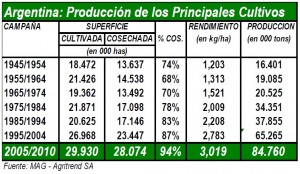
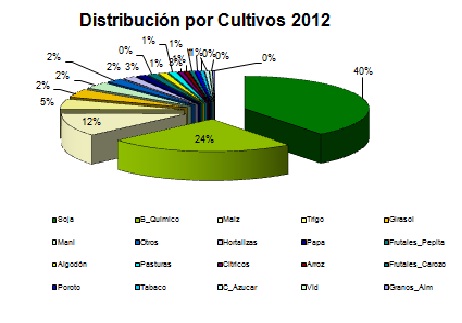
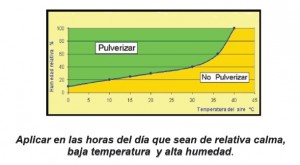
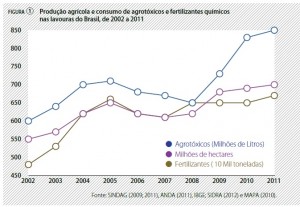
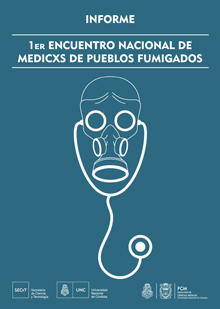

Pingback: Les limites entre exploitation et préservation de l’environnement face à la culture de soja au Brésil – Les limites entre exploitation et préservation de l'environnement face à l'agriculture du soja au Brésil
Pingback: La FAO y el nuevo liderazgo chino – Tribuna Liberal
Pingback: FAO y el nuevo liderazgo de Qu Dongyu – FUHEM